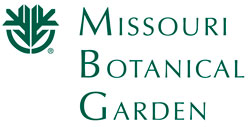4344 Shaw Boulevard
Saint Louis, Missouri
314-577-5100
The Missouri Botanical Garden, also known as Shaw's Garden, is one of the top three botanical gardens in the world. The 79-acre urban oasis was founded in 1859 and is one of the oldest botanical institutions in the country and the first botanical garden of its kind to be established in the United States. The Garden is on the National List of Historic Places and in 1976 it was designated a National History Landmark by the National Park Service because it possesses national significance in commemorating the history of the United States. Highlights include a 14-acre Japanese strolling garden, the Climatron geodesic dome conservatory, a children's garden including a pioneer village, and Henry Shaw’s original 1850 estate home.
Henry Shaw, a native of Sheffield, England, who came to St. Louis in 1819, created the Missouri Botanical Garden. Shaw operated a hardware store in near the riverfront selling goods to the people of St. Louis, soldiers, farmers, and the pioneers making their way west. In 1839, at the age of 40, he was one of the largest landholders in the city and was able to retire. Shaw began to take extended trips to expose himself to the arts, languages and cultures of the great civilizations of Europe. In 1851, Shaw made his final trip abroad in order to attend the first World’s Fair in London. On this trip, he visited the Royal Botanic Gardens at Kew and the gardens at Chatsworth, the most magnificent private residence in Europe. Shaw was so successful as a businessman he was able to retire by the age of 40. On a trip back to England he visited Chatsworth, the most magnificent private residence in Europe. It was during the visit to Chatsworth that Shaw was inspired creating his own garden on his properties in St. Louis.
Henry Shaw was determined to have not just a pleasure garden but also rather one of the finest botanic gardens in the world. The difference is that a botanical garden has facilities and personnel for scientific research in addition to beautiful grounds and plants. Historically, botanical gardens served the same role in the collection and study of plants that zoos played in the collection and study of animals. To achieve this goal Shaw consulted Sir William Jackson Hooker, the Director of the Royal Botanic Gardens at Kew, Dr. George Engelmann, a well-respected amateur botanist from St. Louis, and Harvard University’s Asa Gray, America’s leading naturalist. Shaw opened his garden to the public in 1859. It grew in the European tradition of horticultural display combined with education and the search for new knowledge. For the rest of the life, the creation and care of a garden and a park on his property would be his principle occupation. Shaw also gave St. Louis Tower Grove Park, an unusual Victorian walking park, and Shaw Nature Reserve, some 35 miles west of St. Louis. Shaw died in 1889 and in his will to created a trust to manage the property for the purpose of running a botanical garden.
The Missouri Botanical Garden continues the traditions that Shaw began. The Missouri Botanical Garden an internationally acclaimed center for botanical research and science education. The Ridgway Center is the main visitors’ center and entrance to the Garden and contains the Garden Gate Shop, Sassafras cafe, educational facilities, art exhibits, and the Spink Gallery, which features a beautiful display of ceramics. The Linnean House, built by Shaw in 1882, is the oldest continuously operating greenhouse conservatory in the United States and contains the Garden’s camellia collection.
Visiting the Missouri Botanical Garden
Visiting Hours
9 am - 5 pm daily, except for Christmas
Open until 8 pm on Wednesdays, Memorial Day through Labor Day
The grounds are open at 7 a.m. Wednesdays and Saturdays for early morning walkers
Admission is charged to the Missouri Botanical Garden. Additional admission is charged for some special events and flower shows. See the Missouri Botanical Garden website for details.
Use the official site of the Missouri Botanical Garden to find the answers to the questions about the Missouri Botanical Garden that you may have.













